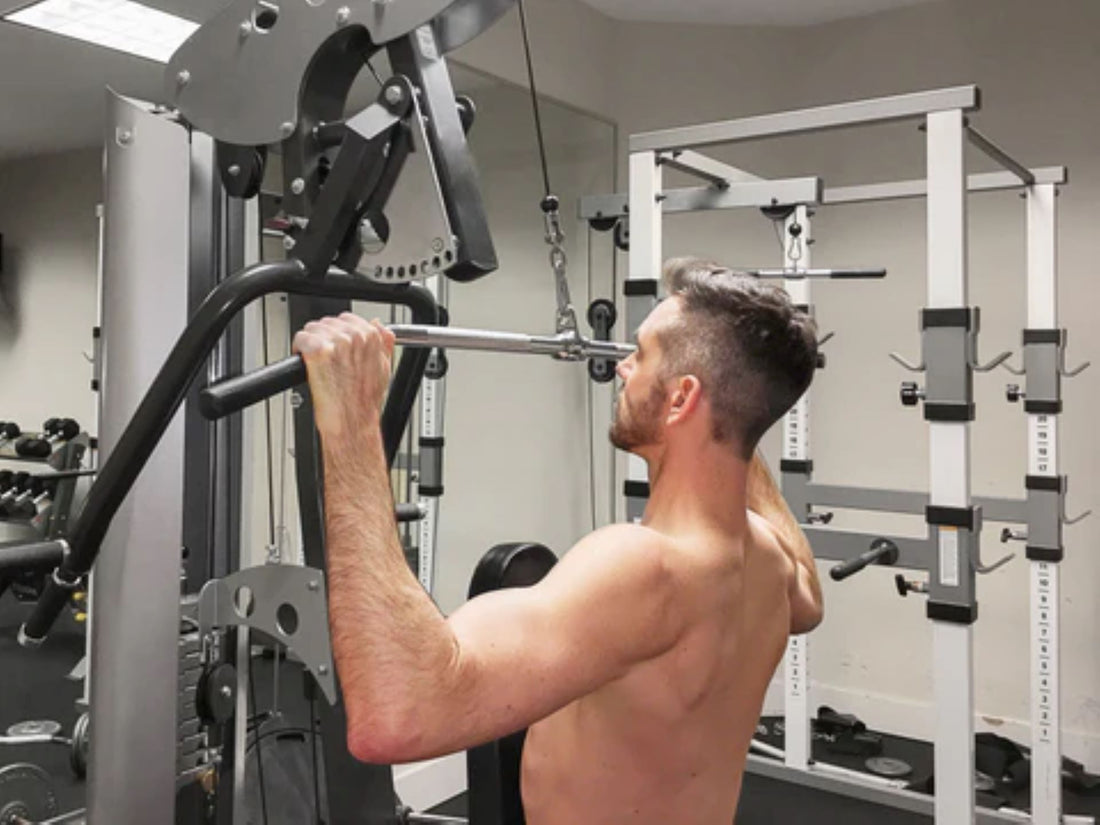
When it comes to building a strong, muscular back, the debate of assisted pull up vs lat pulldown has been ongoing for years. Both exercises have their unique benefits and challenges, but which one truly stands out as the better option for achieving an impressive back?
In this article, we will break down the advantages and disadvantages of each exercise, examine the muscle groups they target, and offer insight on which might be the right choice for you depending on your fitness goals and experience level.
Understanding the Basics
Before diving into the specifics, let's first get a good understanding of what each exercise entails.
What is an Assisted Pull Up?
The assisted pull up is a variation of the traditional pull-up exercise. It typically involves a specially designed machine or resistance band that helps offset your body weight, allowing you to perform pull-ups with greater ease. This exercise primarily targets the latissimus dorsi muscles, along with the biceps, shoulders, and other upper back muscles.
What is a Lat Pulldown?
The lat pulldown is a common exercise performed on a cable machine. Sitting down with your thighs secured under a pad, you pull a bar down towards your chest. Similar to the pull-up, the lat pulldown targets the latissimus dorsi muscles and involves additional upper back, shoulder, and bicep engagement.
Muscle Activation: Which Exercise Engages More?
A critical aspect of the assisted pull up vs lat pulldown debate revolves around muscle activation. Effective muscle engagement is crucial for strength and hypertrophy gains.
Assisted Pull Up Muscle Activation
Despite the assistance, the assisted pull-up is known for being highly effective in engaging the lats, biceps, and core muscles. Because the exercise mimics the natural movement of a traditional pull-up, it encourages the muscles to work synergistically.
Lat Pulldown Muscle Activation
The lat pulldown is highly effective at isolating the latissimus dorsi muscles. Depending on your hand grip type and width, you can target different parts of the lats. The movement is more controlled and can be excellent for beginners or those looking to focus solely on their back muscles without worrying about stabilizing their core.
Strength Development and Progression
Both exercises offer unique advantages for strength development, but the pathways can be quite different.
Progression with Assisted Pull Ups
The beauty of the assisted pull-up lies in its ability to help individuals progress towards unassisted pull-ups. By gradually reducing the level of assistance, or switching to less assistive tools like resistance bands, you can develop the strength needed for traditional pull-ups. This makes it a fantastic option for long-term progression.
Progression with Lat Pulldowns
The lat pulldown allows for easy manipulation of weight, making it simple to adjust resistance levels. This can be particularly beneficial for strength development as you can progressively increase the weight as your back muscles grow stronger.

Versatility and Practicality
Versatility of Assisted Pull Ups
Assisted pull-ups can be performed using various forms of assistance, such as bands, machines, or even a spotter. This versatility makes it possible to train almost anywhere, from the gym to home setups.
Versatility of Lat Pulldowns
On the other hand, the lat pulldown requires access to a cable machine, which may not always be available outside of a gym setting. This limitation can impact the versatility of the exercise.
Safety and Risk Factors
When comparing the assisted pull-up vs lat pulldown, safety is an essential consideration, especially for those new to resistance training.
Safety with Assisted Pull Ups
Assisted pull-ups can be considered safe as long as you use the appropriate assistance level to prevent overstressing the muscles. Proper form is crucial, and initial assistance can help you maintain it.
Safety with Lat Pulldowns
The controlled nature of the lat pulldown machine generally makes it a safe exercise for most individuals. It's easier to control the movement and reduce the risk of form deterioration compared to pull-ups.
Which Exercise is Better for You?
The best choice between assisted pull up vs lat pulldown generally depends on your fitness level, goals, and available equipment.
When to Choose Assisted Pull Ups
- Progression to Traditional Pull-Ups: If your goal is to eventually perform unassisted pull-ups, starting with assisted variations is an excellent approach.
- Total Body Engagement: If you're aiming for full-body engagement, the natural movement pattern of pull-ups is invaluable.
- Versatility: If you need a versatile exercise that can be performed with minimal equipment, the assisted pull-up is your go-to.
When to Choose Lat Pulldowns
- Isolation of Upper Back: If you want to isolate and target your latissimus dorsi with controlled movements, the lat pulldown is exceptionally effective.
- Beginner-Friendly: Ideal for beginners who are not yet comfortable with the pull-up movement, the lat pulldown offers a controlled environment to build initial strength.
- Convenience in Gym Settings: If you train primarily in a gym, a lat pulldown machine is likely readily accessible, allowing for a straightforward setup.
Conclusion
The choice between assisted pull up vs lat pulldown ultimately comes down to your personal fitness goals, experience level, and available equipment. Both exercises are excellent for building a strong, muscular back but cater to different needs and preferences. Whether you're progressing towards unassisted pull-ups or targeting specific muscle groups with precision, incorporating both exercises into your routine can offer balanced development and continued growth.



















